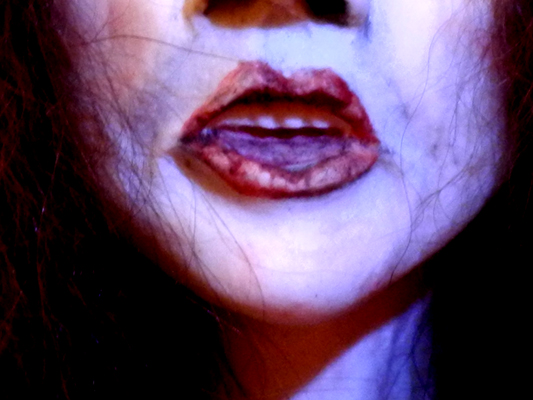
Josiane Keller “Laila’s lips” (2016)
Jan Švankmajer: “Conspirators [of Pleasures] is actually a film about liberation, and about gaining a freedom. It is not art, but a film. Just as, for example, André Breton would not say “Surrealistic painting”, he would say “Surrealism in painting”. In the same way, I speak of Surrealism in film. Surrealism is psychology, it is philosophy, it is a spiritual way, but it is not an aesthetic. Surrealism is not interested in actually creating any kind of aesthetic. It was drawn as an element from various different artists, but it does not exist.”
Wendy Jackson: How can something so prevalent in your work be non-existent?
JS: “Surrealism does exist, but it is not an art form. To characterize Surrealism, you can say it is the Romantic movement of the 20th century. Each romantic period expresses three elements: love, freedom and poetry. Each generation is seeking their own artistic expressions according to the environment and the time period they live in. The Romanticism of the 21st century will ask the same question. It doesn’t matter whether that Romanticism will be Culturalism, or something else.”
WJ: In this film, you reserved the technique of animation for the actualization of the characters’ fantasies. What is the role that animation plays in this limited capacity?
JS: “The animation is mostly used in the sequences where the character creates an artificial [sexual] partner. The point of view of the activity of these people is taken from a distance, or as to be viewed by a third person. But the relationship of the two people who actually fabricate their partners (each other), is done from the point of view of a living human being, of one’s partner. I was hesitating for a long time as to whether I should do it this way or to do it as the other parts of the film are done, meaning, so that it would be viewed as more than just the relationship between the two of them. Then I realized that the individuals did not really seek a living creature, but an effigy, an artificial partner. To make these things alive, I could do it only by animation. Therefore, I stepped out of the third person point of view, and put it into the context of the characters’ own point of view.”
http://www.awn.com/mag/issue2.3/issue2.3pages/2.3jacksonsvankmajer.html